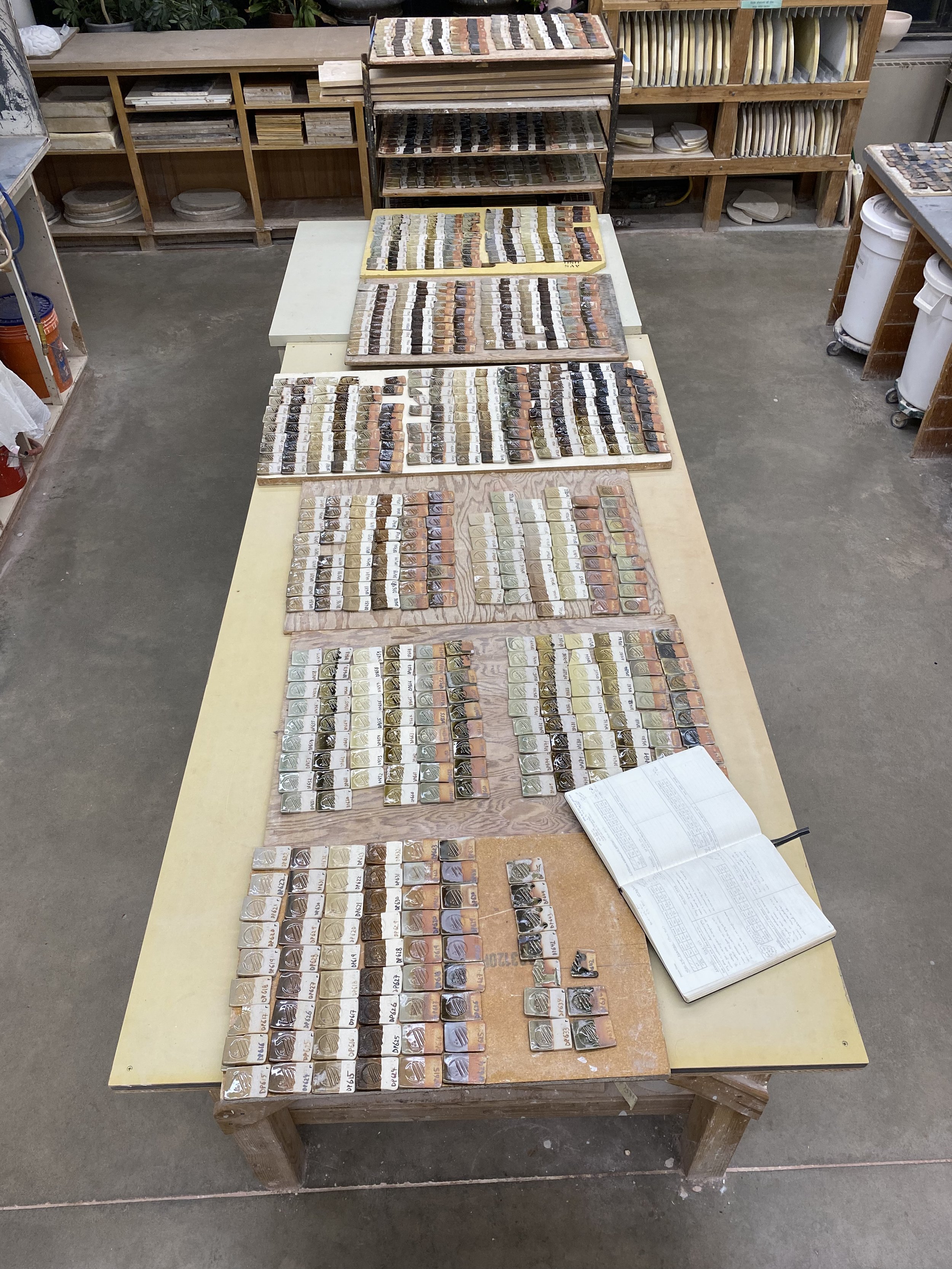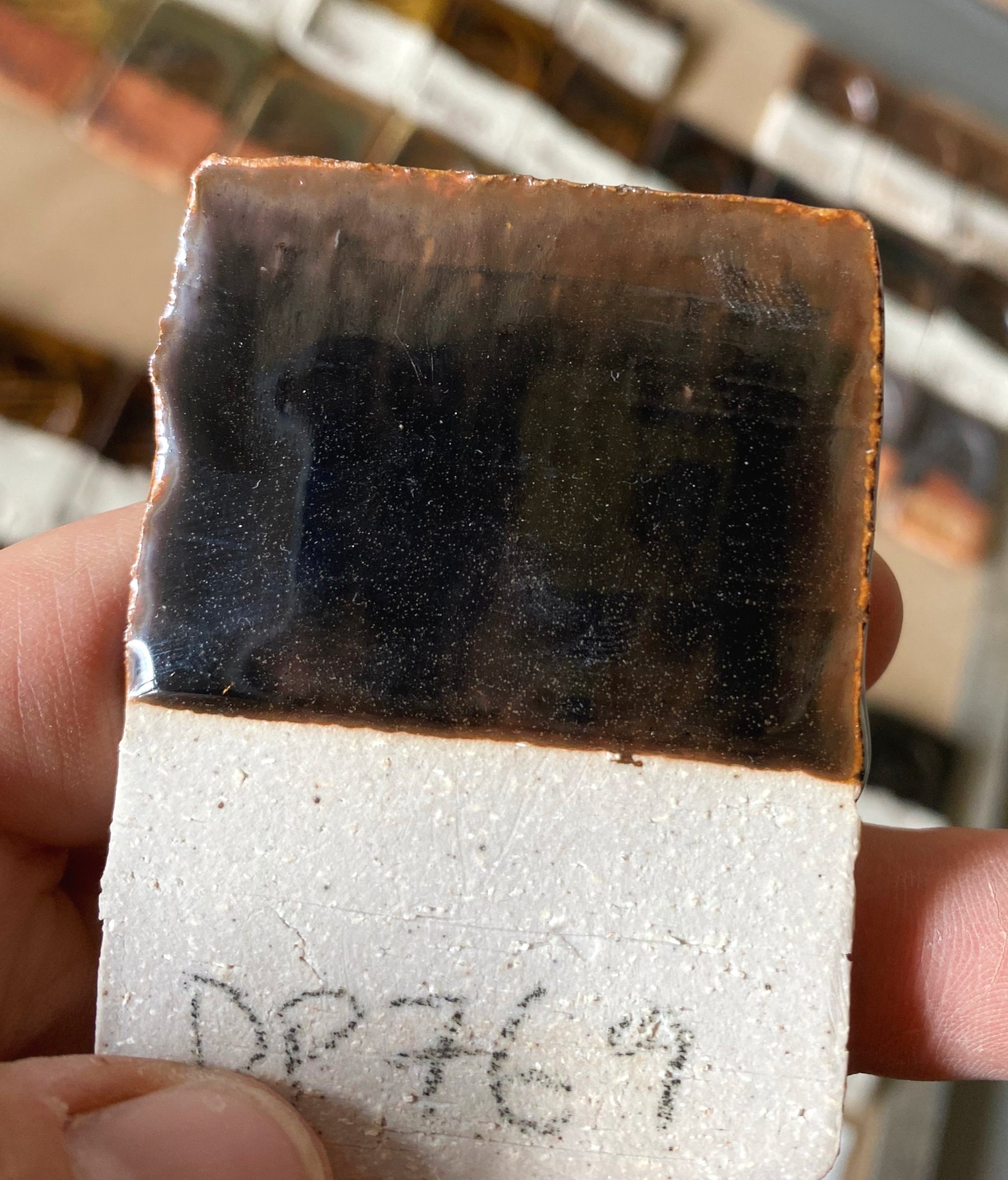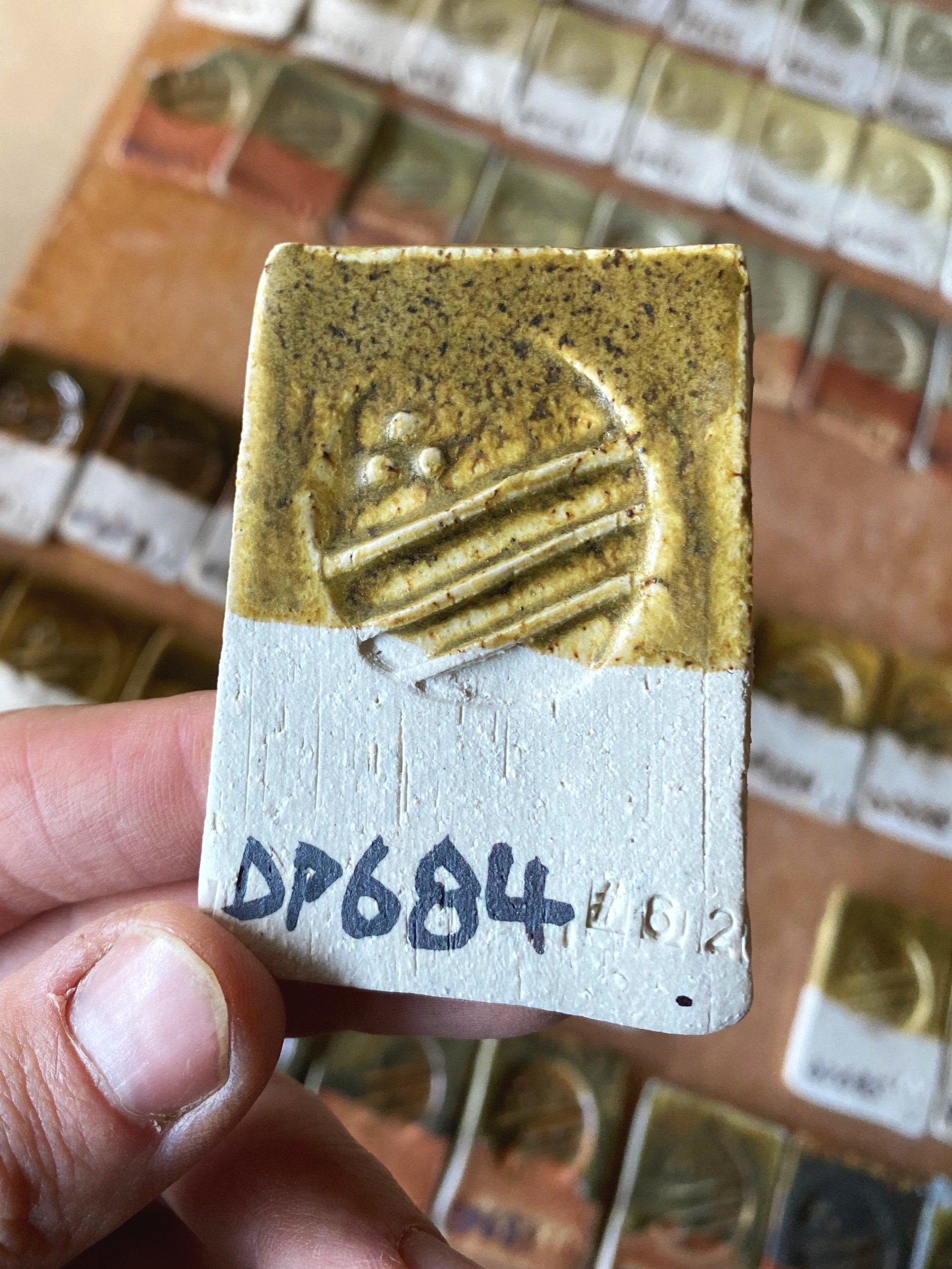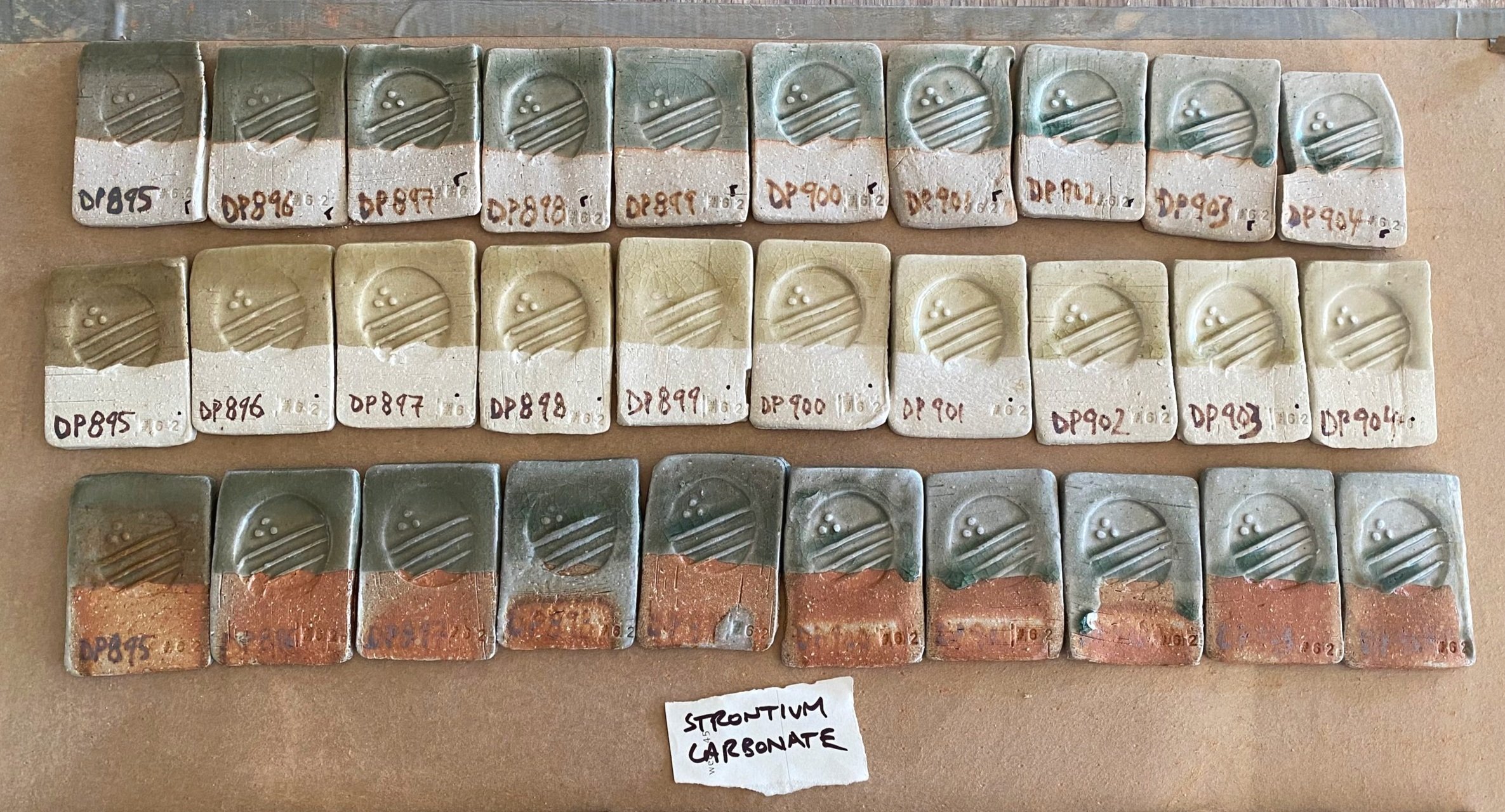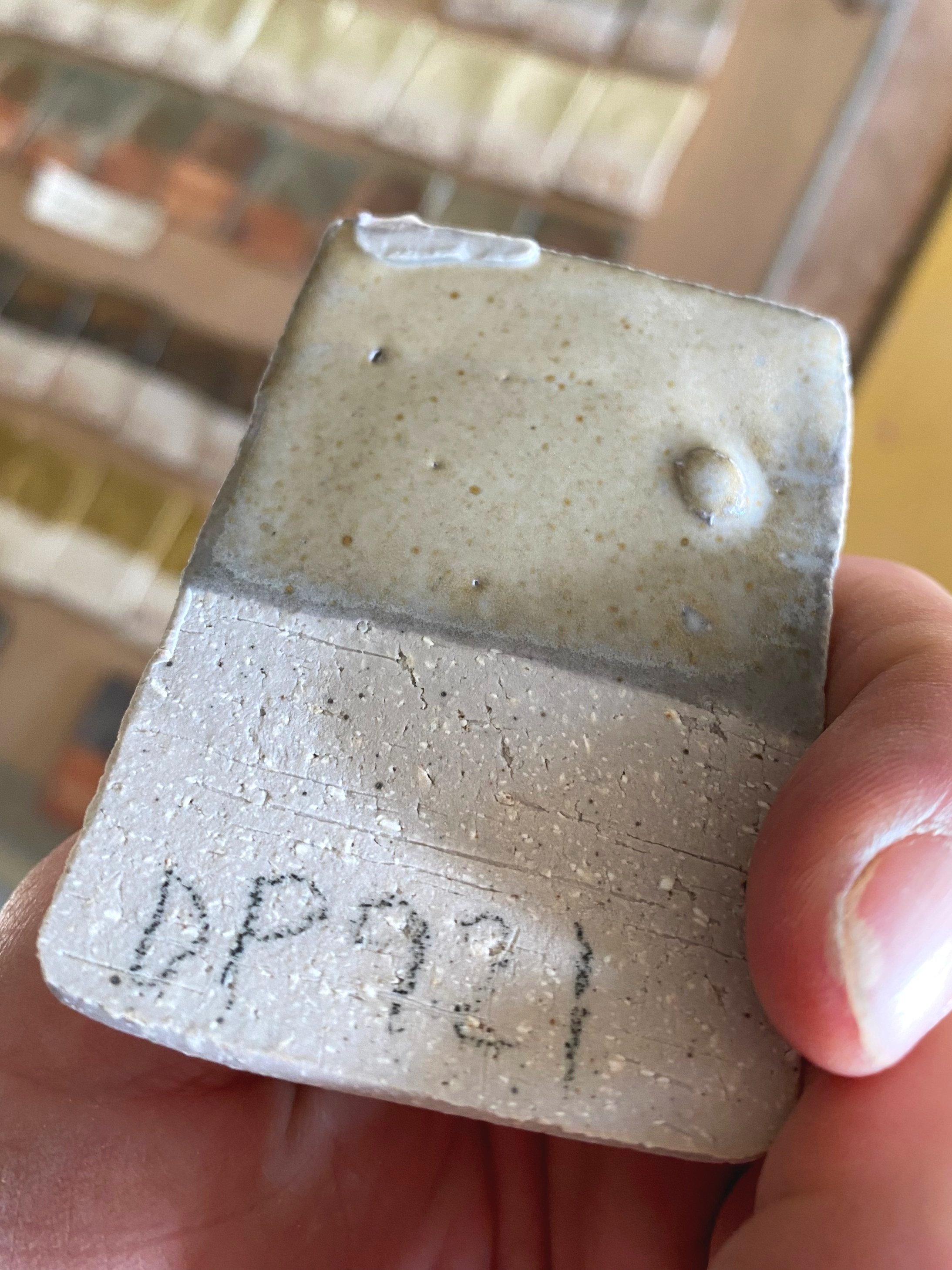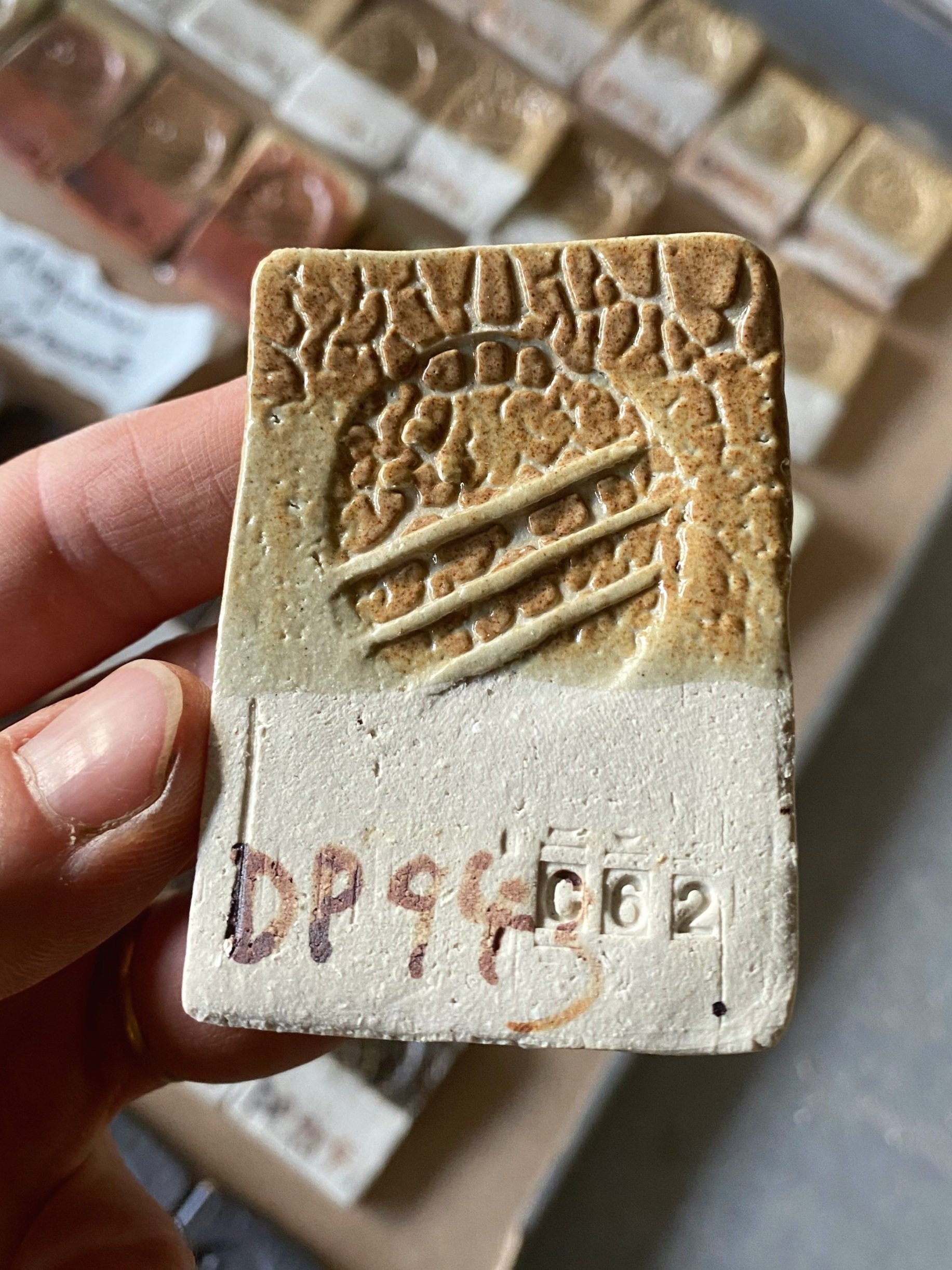Devil's Playground Granite Glaze Tests Round 3: Pictures and Notes
In my last post, I explained the basis for this third round of glaze tests with my granite collected at Devil’s Playground. I wanted to see what various different fluxes would do to it at cone 10.
In addition to the flux tests, I also did a follow-up test with some basalt I collected, and a second test of some yellow glazes I was aiming at. Because this blog post is likely to be rather long, I will do another one dealing with the yellow glaze research. Generally speaking, this is the flux addition round of tests.
If you have any questions about any of this research, please don’t hesitate to email me. I’d love to chat!
In each of the groupings here, I have displayed the cone 10 gas reduction tiles on the top row, then the oxidation ones below them and finally the soda ones. The reduction tests have a little r in the bottom right corner of them (written in sharpie), the oxidation ones have a dot and the soda ones are marked by the flashing on the clay (n sharpie required).
I analyse these results based on my own predilections and goals, but I am sure there are folks out there who might like some of the tests that I dismiss. I also can see coming back to these tests in the future and picking out some, (that I am currently dismissing) for further testing.
In this post, I will go through each set of tests and lay out the results. Each test was fired in three atmospheres: gas oxidation, gas reduction and gas soda, all to cone 10. Click on any of the images to enlarge them and flick through the pictures in each gallery.
Okay, first up I have my second attempt with a basalt addition to the granite. This basalt came from just outside Craters of the Moon park. The results from round 2 were not great: I got a lot of dull khaki colors, but I hoped that by adding extra flux to my granite and redoing the test, I would get more promising results. So I used a mix of 80% granite with 20% lime.
Definitely some promising results from this basalt addition test. I plan to try and make this a base for a tenmoku recipe. I think I favored DP776 in gas reduction. It had 20% basalt to 80% DP mix (80:20 DP:Lime) plus 4% iron oxide. The iron brought a richness without having to use a higher % of basalt. Basalt is quite tough to grind and I do not have an unlimited supply of it, so 20% is more convenient than 40%! Trying to be as practical as possible here. I definitely will follow up on this test and try to jazz it up with some other additions, too. I think it would respond well to iron decoration.
Next up, I have the wollastonite test (yes I spelt it wrong on the paper here; something about wollastonite makes me want to think of it as woolly)…
The wollastonite test represented a big win in these experiments. Wollastonite brings both silica and calcium to the table: its chemical formula is: CaSiO3. This mix made from brighter and bluer glazes than the lime (which we will see below). Out of all the fluxes, wollastonite was the cleanest and brightest. My flux of choice with this granite!
Next up we have the lime set…
I have often used lime as a flux in the past. It supplies calcium, which is a strong flux. In general, it tends to make the glaze greener and also fairly quickly sends it matte. DP673 has a satin texture (at 30% lime) but above that we are in matte territory. The tests were remarkably stable, only threatening to drip in soda.
Next up we have spodumene (LiAl(SiO3)2) which provides lithium as a flux.
On the whole, I did not love any of the spodumene tests. They moved towards shino-like surfaces but none were that special.
Moving on to the grolleg additions. Grolleg is not a flux, although it does contain some flux. It is a blended clay from England that looks good in soda; nice flashing. I have made several successful porcelain bodies using 50% grolleg and various slips, too. In this test, I was hoping to find an attractive slip for soda firing with it. I doubted whether I would get anything interesting in gas reduction or oxidation without soda.
DP 705-13 were fairly drab but when I added 20% lime to them, the results were much nicer. I did not arrive at a tasty soda slip but I did get some intriguing results. DP714-8 were nice blue celadons. It shows how important the flux in the glaze is for color response! With clay, too, I am sure.
Moving on to adding borax to the granite…
The borax did some really interesting things. Especially when I added 4% iron to the mix. In chatting to John Neely about these tests, he said boron (which borax is made up of) melts early on, so it creates some phase separation in the glaze. There were some oily surfaces which I quite liked, and I see a lot of potential here for further experimentation. Seems like as little as 10% makes things more interesting.
Next up: soda ash…
This was an interesting set of results. I got a fair bit of bubbling in oxidation (due mostly to a fast firing I think)… this happened to some of the sets of tests but not others. Anyway it was particularly potent with the soda ash tests. The tests that I found most promising were DP 747-52 in soda. They came out kind of splotchy, almost like ink in water. Quite an interesting effect. It makes me want to try adding soda ash to some other glaze formulations to see what happens.
Now the minspar (a soda feldspar) addition…
These results were similar to the spodumene tests. None too exciting. In soda they tended towards grey/brown and not very nice browns with extra iron added in.
Now the custer feldspar (a potash feldspar) addition…
These results were very similar to the minspar addition and spodumene too. Nothing to write home about!
Next up is strontium carbonate (SrCO3)…
In reduction I got some pretty nice color out of the strontium carbonate addition. It was similar to the wollastonite, which I was wowed by, except a little darker. Started to get drippy with 45-50% added. DP 899-900 were nice.
Next up we have zinc oxide…
There were some pretty exciting results from this set. In reduction, that is. The action was all in reduction. Without iron added I got some interesting kind of goldish tones on mostly cream DP921-3. But when I added the 4% iron things got wild. All the way from 5% zinc oxide up to 50%, there were interesting flecks and colors happening. I will be experimenting more with this!
Next up is petalite (another lithium bearing material)…
The results here were very similar to spodumene, similar to minspar and custer feldspar as well. Nothing that interesting really.
Next up we have magnesium carbonate…
I was not expecting these results. Heavy crawling effects! I did not know when I ran the test that magnesium carbonate is often used to make glazes that crawl in a big way. This is not what I am going for right now, but could be interesting on a sculpture or something like that. One interesting thing to note is the difference between the oxidation and reduction firing.
You can see this in the tile DP 943 above. The reduction firing cycle is much longer than the oxidation cycle… this lead to a difference in the crawling effect. In the oxidation tile, it is more pronounced: the glaze cooled before it had a chance to melt over and heal. This healing started to happen on the reduction tile. We also see more of the crawling effect in the set without iron. The extra flux of the iron caused more melting in the glaze and less crawling.
Okay! Last one! End on a bang! Here we have the lithium carbonate addition…
I made full sets of these lithium carbonate tests but most of them physically broke. The glazes aggressively did not fit. Steer clear of lithium carbonate! John Neely told me that lithium carbonate has a very low thermal expansion; negative thermal expansion, even. So it just will not fit a normal clay body. Perhaps a flame-ware body might accommodate lithium carbonate.

